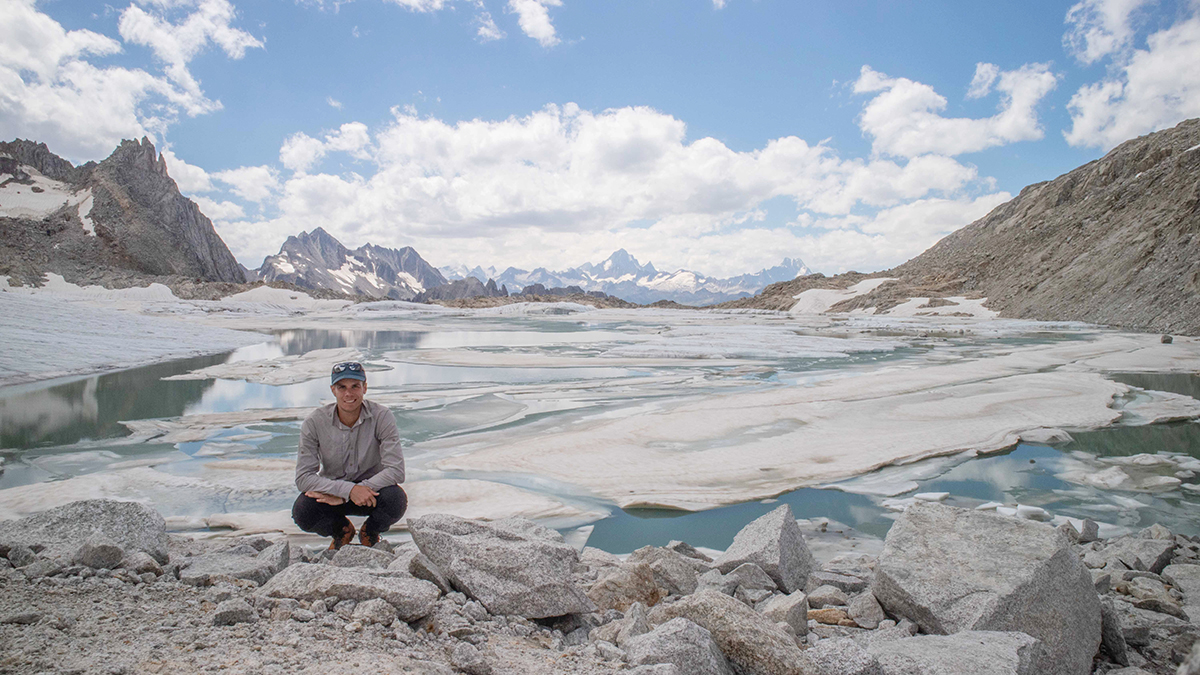2023-04-26
Researching the geological evolution of the Rotondo massif

Alberto Ceccato is a structural geologist and investigates geological phenomena such as earthquakes and faults. With a variety of research methods, he is aiming to find out more about the geological processes and mechanisms that controlled the development of those faults through time. This knowledge helps other researchers of the BedrettoLab like geophysicists or engineering geologists to better understand the geological characteristics of the faults they are interfering with. Usually Alberto’s research journey starts with a field trip where he gets a very close look at the rocks. Last summer, he spent around one month in the Rotondo massif telling us now about his research adventure and his findings.
In June 2022, I started with field work for my research on the Rotondo massif. My aim was to find out more about the faults that we are dealing with in the BedrettoLab, about their age, their quantity and their main characteristics with regards to their mineralogy, length, and orientation. The typical tools of a structural geologist during its fieldwork are a compass, a notebook, a tablet, a hand lens and a camera. As I entered quite difficult terrain, I also always had a GPS-tracker with me.
Field observations
On the notebook, I wrote down any interesting detail that I observed regarding the geological characteristics of the Rotondo massif: the contents of minerals of the rocks, their size and distribution in space, the distributions of the structures and fractures in the massif, etc. The structures that I am most interested in are faults. For a structural geologist, a fault is not just a plain of two rock volumes touching each other. It is a large volume of rock that had been crushed and transformed by strong mechanical forces, sometimes associated with earthquakes, and developed in geological ages which means several millions of years. The final result of these processes, what we actually see in the field, is the formation of fault rocks, so called gouges and cataclasites: fine grained rocks made of quartz, micas, and clay minerals born from past earthquakes and rock deformations along faults. Most of the time, these fine-grained rocks are eroded easily, and they usually form valleys and gullies into which water infiltrates. However, hiking around the Rotondo massif I have found several well-preserved outcrops where it is still possible to see and study in detail such faults and fault rocks.
On the tablet that I also carried with me, I used a dedicated GIS (geographic information system) software where I mapped the faults that I could recognize on the field. By adding my observational data into a digital map, I got an overview of the whole area and how the different faults are distributed. Additionally, precise drone pictures from the area helped to get detailed images of the area that I am looking at which is around 8 km2 large. Altogether, the data collected from my field work consists of hand notes, digital mappings, photos, drone images and lastly rock samples.
Looking back 295 million years
After about 30 days spending in the mountains, I returned to my office at ETH Zurich to start with analytical work on my computer and in our laboratory. With a certain grinding method, our laboratory technician created a very thin layer of rock that makes it possible to be analysed under the microscope. This allowed me to learn more about the micro-structure and geochemical composition which are indicators for the geological process generating the fault rocks at the age of the fault. With the combination of the large-scale methods in the field and the microscopic scale research methods, I was able to draw the story of the Rotondo massif back from the origins up until today.
It is quite long and troubled, starting at around 295 millions of years ago, when the Rotondo granite solidified from hot magmas deep in the Earth’s crust. Plate tectonic forces acting during the formation of the Alps squeezed and crashed the Rotondo granite, leading to the development of a sequence of different sets of faults and fractures. Each of these sets is characterized by different minerals, chemical compositions and fault orientations, suggesting that each set formed at different depth and temperature conditions through the geological history. Some of these faults and fractures likely generated during earthquakes, and thus further analysed will help us to understand the geological characteristics which might control earthquake generation in the Rotondo granite. 26 April 2023
This text was published in the latest issue of the "Gazzettino di Bedretto" (in Italian).

